#Open Source Software Development
Explore tagged Tumblr posts
Text
In this episode of Tech Horizons, we explore the power of open-source software development and how it’s transforming businesses. Learn how companies like Impressico Business Solutions are driving innovation, providing customized solutions, and helping organizations scale with cutting-edge open-source technologies. Tune in for insights on collaboration and growth!
#Open Source Software Development Company#Open Source Software Company#Open Source Software Development#Open Source Development#OpenSource#Software Development
0 notes
Text
I proudly present you : an in-development pixel art editor! Largely oriented at tilesets and charsets, Voidsprite supports custom-size grids alongside resize-canvas-by-grid-size and resize-canvas-by-grid-count, alongside numerous (and growing with future update) supported image formats. Please check it out, and leave any suggestions or feedback on the itch.io page! As it is a FOSS project, check it out on github also!
66 notes
·
View notes
Text
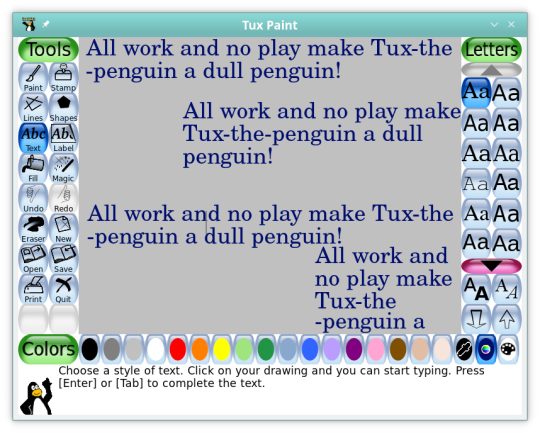
If all goes well, clipboard pasting will be supported in the Text and Label tools in Tux Paint 0.9.35.
18 notes
·
View notes
Text
/* Filename: Discipline.scala */ for (i <- 1 to 1000) { println( f"$i%4d: I will not use code to cheat." ); } // >:3
#computer programming#open source software#software#computer science#development#free software#software development#software developers#programming#scala#scala programming
49 notes
·
View notes
Text

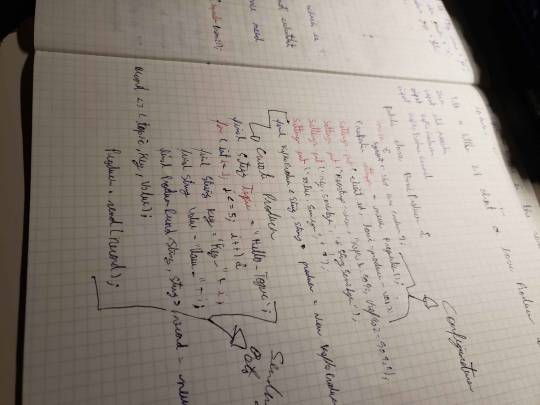
Some screen sharing of challenging backend Java code that I was testing, although it was quite basic, to be honest.
Additionally, my notebook contained a pretty basic code base for a producer class that I wrote by hand. I want to become very skilled in creating Java classes based on the producer-consumer pattern using Kafka.
#coding#linux#programming#programmer#developer#software development#software#student#study aesthetic#study blog#university student#studyblr#study motivation#studying#university#learning#study#studynotes#studyblr community#java#vim#neovim#vimterminal#clivim#iusevimbtw#linuxposting#open source#computers#debian#notebook
32 notes
·
View notes
Text
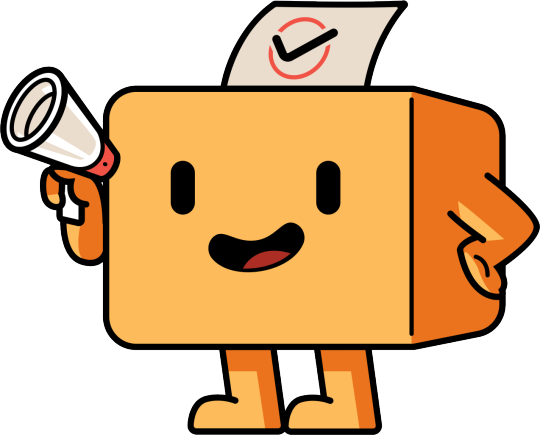
We’re excited to introduce Vibe Checks for the Praxis website, inspired by the process we’ve developed in our Discord server. With this new feature in place, new members will be able to answer a list of community decided questions, ensuring a safe and respectful environment for all who join the website.
Here’s how it works: Vibe checkers, selected by the community, read over the answers and engage with new members in their respective questionnaire tickets, which are automatically generated upon joining. If enough vibe checkers vote in favor of verifying a new member, they are automatically verified and receive a welcome notification.
With Vibe Checks implemented, we're now able to safely share invite links to the website far outside our Discord server. Whether you're a longtime community member or a newcomer looking to contribute, we welcome you to join us in this early round of testing and QA.
Join the project: https://praxis-app.org/i/4efdc9de
#open source#free software#software#praxis#foss#developers#programming#design#typescript#reactjs#nodejs
50 notes
·
View notes
Text
"From Passion to Profession: Steps to Enter the Tech Industry"
How to Break into the Tech World: Your Comprehensive Guide
In today’s fast-paced digital landscape, the tech industry is thriving and full of opportunities. Whether you’re a student, a career changer, or someone passionate about technology, you may be wondering, “How do I get into the tech world?” This guide will provide you with actionable steps, resources, and insights to help you successfully navigate your journey.
Understanding the Tech Landscape
Before you start, it's essential to understand the various sectors within the tech industry. Key areas include:
Software Development: Designing and building applications and systems.
Data Science: Analyzing data to support decision-making.
Cybersecurity: Safeguarding systems and networks from digital threats.
Product Management: Overseeing the development and delivery of tech products.
User Experience (UX) Design: Focusing on the usability and overall experience of tech products.
Identifying your interests will help you choose the right path.
Step 1: Assess Your Interests and Skills
Begin your journey by evaluating your interests and existing skills. Consider the following questions:
What areas of technology excite me the most?
Do I prefer coding, data analysis, design, or project management?
What transferable skills do I already possess?
This self-assessment will help clarify your direction in the tech field.
Step 2: Gain Relevant Education and Skills
Formal Education
While a degree isn’t always necessary, it can be beneficial, especially for roles in software engineering or data science. Options include:
Computer Science Degree: Provides a strong foundation in programming and system design.
Coding Bootcamps: Intensive programs that teach practical skills quickly.
Online Courses: Platforms like Coursera, edX, and Udacity offer courses in various tech fields.
Self-Learning and Online Resources
The tech industry evolves rapidly, making self-learning crucial. Explore resources like:
FreeCodeCamp: Offers free coding tutorials and projects.
Kaggle: A platform for data science practice and competitions.
YouTube: Channels dedicated to tutorials on coding, design, and more.
Certifications
Certifications can enhance your credentials. Consider options like:
AWS Certified Solutions Architect: Valuable for cloud computing roles.
Certified Information Systems Security Professional (CISSP): Great for cybersecurity.
Google Analytics Certification: Useful for data-driven positions.
Step 3: Build a Portfolio
A strong portfolio showcases your skills and projects. Here’s how to create one:
For Developers
GitHub: Share your code and contributions to open-source projects.
Personal Website: Create a site to display your projects, skills, and resume.
For Designers
Design Portfolio: Use platforms like Behance or Dribbble to showcase your work.
Case Studies: Document your design process and outcomes.
For Data Professionals
Data Projects: Analyze public datasets and share your findings.
Blogging: Write about your data analysis and insights on a personal blog.
Step 4: Network in the Tech Community
Networking is vital for success in tech. Here are some strategies:
Attend Meetups and Conferences
Search for local tech meetups or conferences. Websites like Meetup.com and Eventbrite can help you find relevant events, providing opportunities to meet professionals and learn from experts.
Join Online Communities
Engage in online forums and communities. Use platforms like:
LinkedIn: Connect with industry professionals and share insights.
Twitter: Follow tech influencers and participate in discussions.
Reddit: Subreddits like r/learnprogramming and r/datascience offer valuable advice and support.
Seek Mentorship
Finding a mentor can greatly benefit your journey. Reach out to experienced professionals in your field and ask for guidance.
Step 5: Gain Practical Experience
Hands-on experience is often more valuable than formal education. Here’s how to gain it:
Internships
Apply for internships, even if they are unpaid. They offer exposure to real-world projects and networking opportunities.
Freelancing
Consider freelancing to build your portfolio and gain experience. Platforms like Upwork and Fiverr can connect you with clients.
Contribute to Open Source
Engaging in open-source projects can enhance your skills and visibility. Many projects on GitHub are looking for contributors.
Step 6: Prepare for Job Applications
Crafting Your Resume
Tailor your resume to highlight relevant skills and experiences. Align it with the job description for each application.
Writing a Cover Letter
A compelling cover letter can set you apart. Highlight your passion for technology and what you can contribute.
Practice Interviewing
Prepare for technical interviews by practicing coding challenges on platforms like LeetCode or HackerRank. For non-technical roles, rehearse common behavioral questions.
Step 7: Stay Updated and Keep Learning
The tech world is ever-evolving, making it crucial to stay current. Subscribe to industry newsletters, follow tech blogs, and continue learning through online courses.
Follow Industry Trends
Stay informed about emerging technologies and trends in your field. Resources like TechCrunch, Wired, and industry-specific blogs can provide valuable insights.
Continuous Learning
Dedicate time each week for learning. Whether through new courses, reading, or personal projects, ongoing education is essential for long-term success.
Conclusion
Breaking into the tech world may seem daunting, but with the right approach and commitment, it’s entirely possible. By assessing your interests, acquiring relevant skills, building a portfolio, networking, gaining practical experience, preparing for job applications, and committing to lifelong learning, you’ll be well on your way to a rewarding career in technology.
Embrace the journey, stay curious, and connect with the tech community. The tech world is vast and filled with possibilities, and your adventure is just beginning. Take that first step today and unlock the doors to your future in technology!
contact Infoemation wensite: https://agileseen.com/how-to-get-to-tech-world/ Phone: 01722-326809 Email: [email protected]
#tech career#how to get into tech#technology jobs#software development#data science#cybersecurity#product management#UX design#tech education#networking in tech#internships#freelancing#open source contribution#tech skills#continuous learning#job application tips
8 notes
·
View notes
Text
Reminder for artists and riggers with interest in Live2D:
Live2D Juku, Live2D's official Live2D Cubism youtube course, free until November 30, 2023.
Original is in Japanese, with english caption available.
(translated audio)
youtube
[Live2D Juku playlist link]
Check description of video for more resource.
#some day inochi2d (open source free rig software) will be develop more with good tutorial n documentation... some day#free#magz upload#o post#text post#live2d#Youtube
53 notes
·
View notes
Text
FlipaClip premiumed it’s shit now it’s a fucking supcription service, I got the one time payment before the switch but my friends didn’t so it just grinds my fucking gears
Something is genuinely want to do if I had any knowledge on organization or app design is to put together a team of programmers/app-maker-people and make like an entirely free free animation/art program that has all the stuff but with tutorials and a simplified layout
Idk how realistic it could be but we could get money from kofi/patreon stuff maybe and like I’d want to optimize it as much as possible too and be accessible on as many different softwares like I’d want this shit to run on a CALCULATOR/j
Again it’s just a bit of a silly idea that may not be achievable at all I don’t know anything about programming but a guy can dream
Though any programmers/app designers here I’d really like to hear your thoughts/critiques please as long as they remain in good faith and respectful!
6 notes
·
View notes
Text
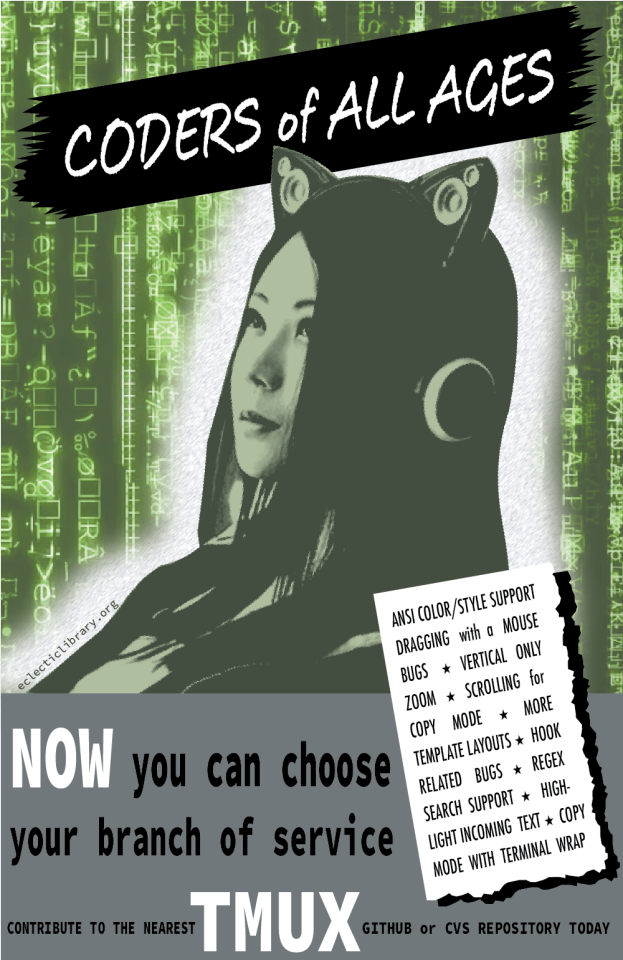
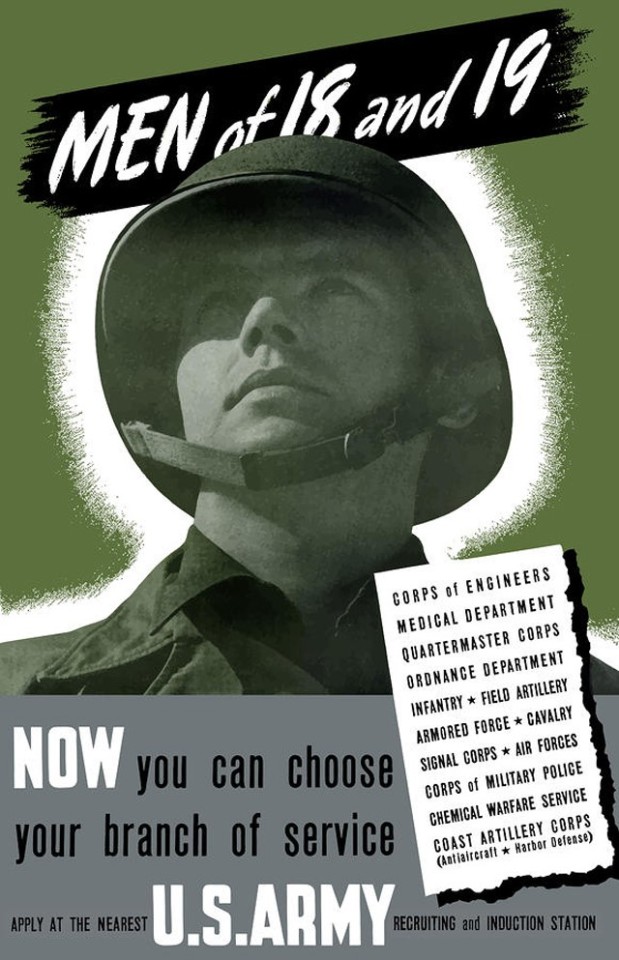
One of the most intimidating and also scariest facts I've been coming to terms with is how true that one xkcd comic is about how many people & libraries are reliant on some package that has been thanklessly maintained by one person in Nebraska since 2003.
In an entirely unrelated discovery, I learned today that tmux (you know, that one terminal multiplexer that is used by god knows how many people) is functionally maintained & developed by one dude, Nicholas Marriott, who was the original creator of the program back in 2007. There is a contribution guide, and he does have a list of recommended issues to work on. So, if you're looking for an open source project to contribute to, and you use tmux, consider :)
13 notes
·
View notes
Text
Explore the world of Open Source Software Development and discover how it can transform your business with scalable, flexible, and cost-effective solutions. Learn how Impressico Business Solutions, a leading Open Source Development Company, provides custom, community-driven software to help businesses thrive in today’s digital landscape. Tune in for expert insights and best practices!
#Open Source Software Development Company#Open Source Software Company#Open Source Software Development#Open Source Development
0 notes
Text
Regarding the DeepSeek AI Hysteria:
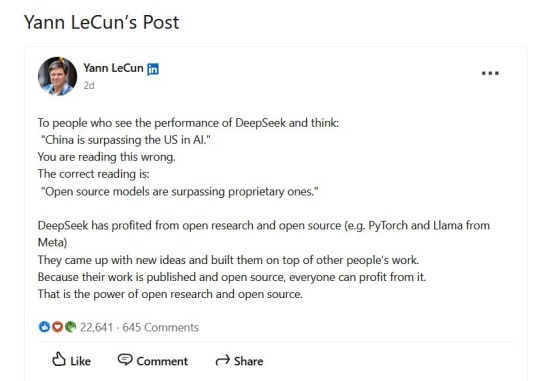
Text of posting:
To people who see the performance of DeepSeek and think: "'China is surpassing the US in AI." You are reading this wrong. The correct reading is: "Open source models are surpassing proprietary ones." DeepSeek has profited from open research and open source (e.g. PyTorch and Llama from Meta). They came up with new ideas and built them on top of other people's work. Because their work is published and open source, everyone can profit from it. That is the power of open research and open source.
Also recommended reading:
#ai bubble#proprietary software#nvidia#openai#llm#open source development#software development#ai industry#chinese software#chinese ai#ai hype#ai bullshit#yann lecun#american ai#ars technica#signal boost
4 notes
·
View notes
Text
Working on a crescent-drawing tool for Tux Paint

24 notes
·
View notes
Text
How to dip your 🦶 into Open Source
Contributing to Open Source projects can be a valuable experience for beginner programmers. It can help you learn new skills, build your portfolio, make connections, make a difference, and gain recognition for your work.
But... how do I start? Well here's an option to get you started ☟

Google's Summer of Code (GSoC) is an online mentorship program that matches beginner contributors to open source software development with mentors from open source projects ❋
GSoC takes place every year mid January with registration to be a contributor usually opening around mid March. Unfortunately for this year (2023) the application deadline is tomorrow シ (April 4)
However! There are so many open source projects available this year so I highly encourage you to try to apply even if its past April 4 you might get lucky 🍀
The key to getting accepted by an org is to interact with their developer community and keep in contact with the orgs mentors. This is why I believe even if they application period has ended if you join the orgs online communication app and involve yourself in the community and keep sharing your skills and expertise with them you will still have a good chance of being able to join!
Best of luck! (づ。◕‿‿◕。)づ
(even if it doesn't work out this year there will always be the next and the next and the next... I recommend checking out the archive for how the previous years went to better prepare yourself to jump on this opportunity next year!!)
#GSoC#Google Summer of Code#Google#Open Source#Code#progblr#codeblr#resources#programming#software development#computer science#mentor
83 notes
·
View notes
Note
I know you're on paternity leave so feel free to ignore this if you don't want to think about it, but has there been any progress on open-sourcing Tumblr's front-end? Inquiring minds would like to know
i hadn’t seen any progress on it before i left. there’s a strong willingness to do it, it’s just a big task to get it open-source-able in a sustainable way. a lot of our CI/CD processes rely on stuff that would need to be rebuilt from scratch, i think. totally doable, just not a priority.
but maybe there’s been progress since i left, i dunno! 🤞
#open source#tumblr development#paternity leave#front end#software sustainability#continuous integration#ai generated tags
18 notes
·
View notes
Text
I’ve been Julia-pilled, move over MATLAB/numpy 😍
#tbh I still kinda like matlab syntax#butttt julia seems so much better for package development and test-driven design and like general good software engineering principles#also open source of course hehehehe#me
8 notes
·
View notes